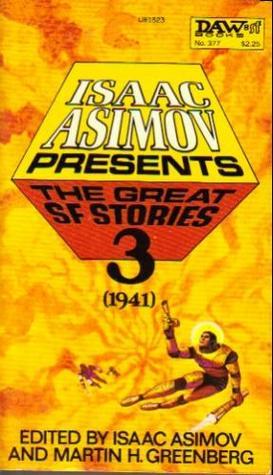What do you think?
Rate this book


352 pages, Mass Market Paperback
First published March 4, 1980
Volume curato da Asimov e dedicato all'anno 1941, che fu uno dei più difficili e tragici della nostra storia. Il maresciallo Rommel condusse le sue truppe dall'Italia all'Africa; la corazzata tascabile tedesca Bismarck fu affondata dalla Marina britannica; la Germania invase l'Unione Sovietica; Churchill e Roosevelt firmarono la "Carta Atlantica"; aerei giapponesi attaccarono Pearl Harbour e gli Stati uniti dichiararono guerra al Giapppone. Il 1941 è considerato una delle annate più significative della fantascienza: sono qui proposti i racconti che più hanno segnato quel periodo, partendo da Eric Frank Russel, fino ad arrivare allo stesso Asimov, a Fredric Brown, Lester del Rey e molti altri.